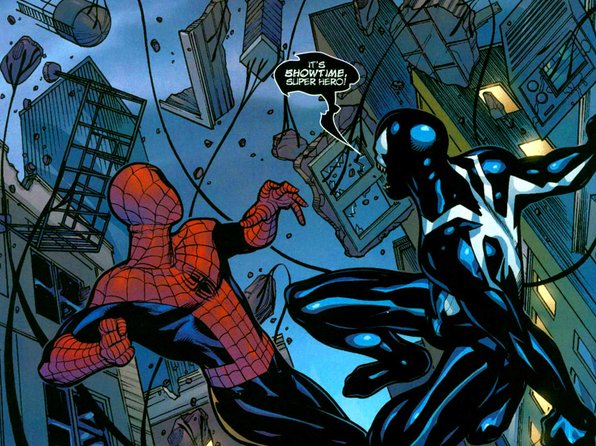solanin‘s strength is in the way it takes a rite of passage most of us have to go through and shows how it affects one young girl. Its melancholy tone reflects our feelings about the difference between dreams and reality, resulting in a very sad, but powerful, read. We map ourselves onto Meiko and relate to her struggle.
Viz sent over a review copy of Inio Asano’s collection of short stories, What a Wonderful World! 1, and I was pleasantly surprised to find that it complemented solanin to an extraordinary degree. The first story made me wonder if it was going to tread over the same ground as solanin, with the slightly depressed post-college female lead, but it quickly took a hard left turn in a new direction.
What A Wonderful World! fits into solanin like a puzzle piece. It’s clear when you compare the capitalization of the books, even. solanin uses a time of trial to show how the harsh realities of life and lofty goals of dreams eventually intersect and even out. What A Wonderful World! takes people in bad situations and shows them just how beautiful life can be.
There’s a slight, but important, difference in the two approaches, and it’s one I appreciate very much. Each story has a person at a crossroads, or who has fallen from grace, and gives them a motivation to pick up the pieces. Sometimes it’s in the form of a crow, which is itself the embodiment of someone’s fear and self-loathing. At other times, it’s a man in a bear costume with a dark secret. And, once, it was a turtle who recognized that he was in a situation with a bleak future, so he did the only thing he could: changed.
What A Wonderful World! is not a subtle book. The exclamation point in the title is there for a reason. Characters repeatedly reiterate the message of the book, which is that life can be wonderful if you just reach out and grab hold, in very plain language. “There are times in life when we must go forward,” says one character. “Move on, despite everything. Even if I’m making a mistake, I won’t have regrets.” Clear as day, right?
The book is separated into nine chapters, called tracks in the table of contents. It immediately put me in mind of an album, which turned out to be very apt. If you’ve ever heard a record where each song leads into or relates to the next song, whether it’s Pink Floyd’s The Wall or Prince Paul’s A Prince Among Thieves, you can appreciate the fact that the relationship between the songs makes the entire album better.
That’s true in What A Wonderful World! as well. Something connects the current story to the next one. Sometimes it’s as deep as a character who appears in one track gaining a bigger role in the next track. Other times, it’s a shared location, or a dragonfly flickering from one scene to another. This connective tissue makes the book into something greater than the sum of its parts. Instead of being isolated tales of people suddenly discovering how to be happy, you get the feeling of happiness going from story to story, spreading like, well, a disease. You know how they say that a smile is infectious? Like that.
I really liked reading What A Wonderful World! 1, and the first thing I did when I finished was hop on Amazon and order What A Wonderful World! 2 . Both books come out on 10/20, next Tuesday. After solanin and What A Wonderful World! 1, Inio Asano is a must-buy for me. He’s a member of the Naoki Urasawa club. His work is engaging and uplifting in a way that I respect, and honestly don’t see often enough. He’s got a deft grasp of cartooning, pacing, and emotion, which gives his comics real weight.
. Both books come out on 10/20, next Tuesday. After solanin and What A Wonderful World! 1, Inio Asano is a must-buy for me. He’s a member of the Naoki Urasawa club. His work is engaging and uplifting in a way that I respect, and honestly don’t see often enough. He’s got a deft grasp of cartooning, pacing, and emotion, which gives his comics real weight.


